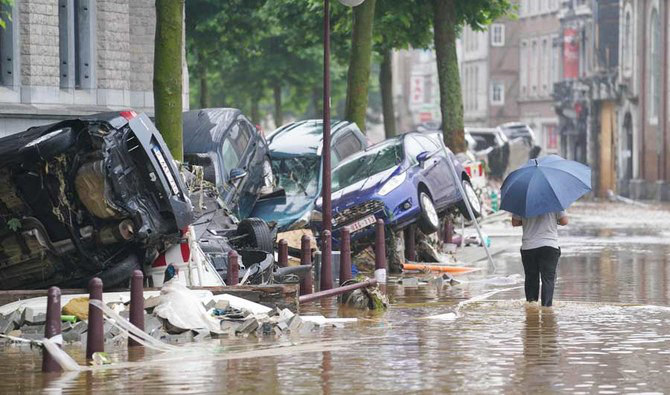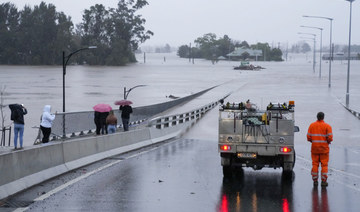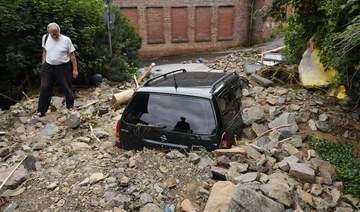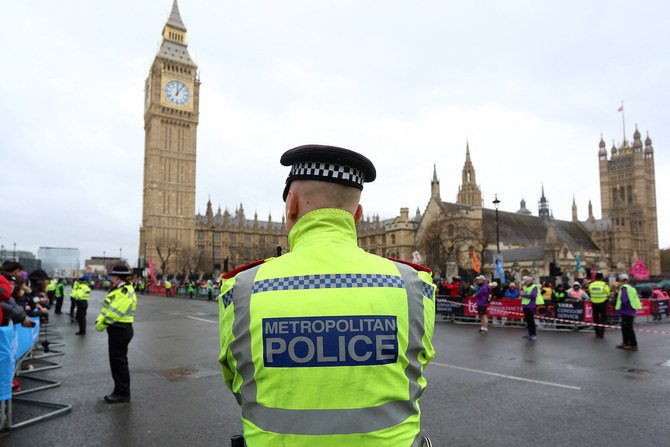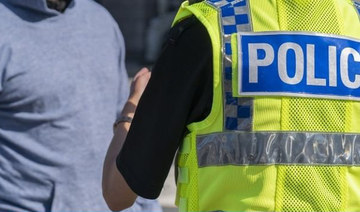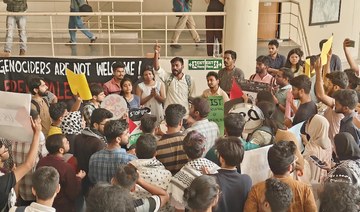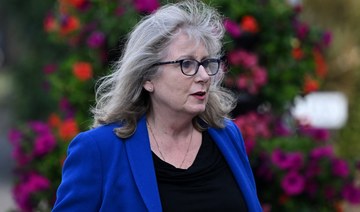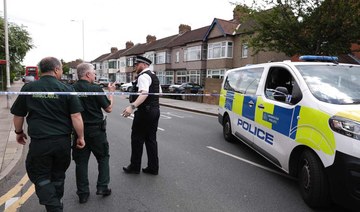LIMBOURG, Belgium: Barely lapping the lowest edges of its banks, the river Vesdre gives away nothing of what happened a year ago.
But the signs of the deluge are there in the picturesque Belgium town of Limbourg — including waterside social housing that sits empty, with doors padlocked shut and mailboxes overflowing.
One year after flooding devastated parts of southern and eastern Belgium — killing 39 people — Limbourg is struggling to recover as authorities consider how to rebuild as climate change brings ever-growing flood risks.
Renovations of the abandoned social housing block were 80 percent complete when regional authorities halted work in May, after reconsidering their plans amid fears of continuing flood threats to the property.
An estimated 1.4 million euros ($1.44 million) had already been spent on the homes, including drying out water-logged walls and fitting new double-glazed windows.
A year ago flooding traumatized the town of 6,000, many residents of Limbourg have left and others are still living in temporary accommodation.
Some of those that remain say they hope to leave behind a traumatic chapter in Limbourg’s history.
“We don’t really want to think about it. We don’t really want to talk about the floods either,” said Christelle Bolzan, a pharmacist in the town.
“We want to move on. We want to rebuild and we don’t want to keep the memory of being a flood-hit area, so that people aren’t afraid.”
The July 2021 floods, which also killed scores of people in Germany and displaced thousands in the Netherlands, caused shock across Belgium, a wealthy country that climate experts say failed to heed warnings about extreme weather rapidly becoming a reality almost everywhere.
With scientists warning that a hotter planet will hike the frequency and intensity of extreme rainfall, experts in water management and urban planning said traditional solutions to flood threats would not suffice if Limbourg is to stop disasters going forward.
For instance, instead of simply rebuilding the Vesdre’s banks and bolstering defenses such as levees, the town should seek to widen river channels, expand floodplains that can absorb excess water and adapt its buildings — all while putting the community at the heart of such plans, experts said.
The regional Walloon government has said it is taking a phased approach to reconstruction, focusing on “urgent repairs” of damaged riverbanks before the winter.
Yet Limbourg’s mayor Valérie Desjardin said the work was not progressing quickly and that the town was finding it tough to make long-term plans amid concerns over public finances as the government battles multiple crises, including COVID-19.
“One year on (the floods are) soon forgotten. There are other emergencies to deal with,” Desjardin said, alluding to pandemic recovery, rising energy prices, and the war in Ukraine.
Industrial adaptations
The industrial history of Wallonia’s river system has left Limbourg particularly exposed, said urban planner Benoit Moritz, who is helping the government with a long-term flood adaptation plan.
The river has long been used to power water mills and hydroelectric plants, and adapted in various ways to facilitate that — such as building dams to store water in times of drought and narrowing the channels to increase the water’s force.
Reversing 200 years of human impact on the river is a huge undertaking and requires difficult decisions on issues from housing and infrastructure to property acquisition, Moritz said.
Certain buildings in Limbourg could be adapted to withstand floods — by replacing ground floors with parking spaces, for example — but he warned that some houses would have to be destroyed in order to allow more space for the river.
The urban planner urged authorities to buy abandoned industrial buildings along the river to expand the floodplain, and to replace picturesque arched stone bridges that can become clogged with debris and ultimately exacerbate flooding.
Yet such measures take a long time to implement, he said, adding that the situation was not helped by some decisionmakers who still had “old reflexes” in terms of tackling floods.
“There are still people who say we need to build higher walls, even if we know (it) won’t solve the problem,” said Moritz, an urbanism professor at the Universite Libre of Brussels.
But adaptation to prepare for worsening long-term threats “is really serious, and it’s very important” he added. “If we don’t take care ... there are people who can die from our mistakes in the way we develop the land.”
Marjolijn Haasnoot, a Dutch professor specializing in water management, agreed and urged that rivers be afforded more natural space, quickly, to reduce the impacts of flooding.
“Climate change can still surprise us,” said Haasnoot, who assessed flood management strategies in Europe for the latest set of United Nations climate reports.
“Making room for the river” and restoring its natural floodplain in places like Limbourg would not only help prevent damage to buildings but create rich habitats that would allow aquatic, grassland and forest species to thrive, she said.
She said disasters like the 2021 floods should act as a “wake up call” for leaders to support people with effective long-term adaptation to global warming.
Widening rivers and their floodplains could also lead to more river-front recreation opportunities — a win for both the environment and residents, Moritz added.
Slow recovery
Faced with criticism over the slow place of riverbank restructuring following the floods, Walloon’s minister-president Elio di Rupo pointed to the scale of the challenge, highlighting that the Vesdre’s banks stretch for 880 km (547 miles).
Over the last year, the floods have cost the region 2.8 billion euros ($2.87 billion) at a time when the public purse has been stretched thin by pandemic recovery efforts, the war in Ukraine and rising energy costs.
Di Rupo said the next phase of rebuilding must wait for the results of hydraulic modelling designed to simulate runoff and its flood impacts, and test ways to reduce it.
“We are in the process of evaluating how to reconstruct the banks in a resilient way, not just more resistant but in a new state of mind,” he told a press conference at the regional government’s seat in Namur earlier this month.
Meanwhile, people have been using insurance money to rebuild their homes, despite the fact they remain in flood-risk areas.
Mayor Desjardin fears this will lead to a ‘double penalty’ as citizens invest in homes that will be deemed uninsurable or need to be demolished to make way for river engineering works.
She calculated that one in four families had left the town since the floods, leaving a hole in a community she described as once full of life.
Conscious of the lingering trauma residents still face, the Walloon government has provided mobile teams of psychologists to visit flood-hit areas until the end of 2022.
“When it rains I can’t sleep,” Desjardin admitted, adding that she still found it difficult to talk about the floods.
But one thing is clear, she said: “We are less safe than we were one year ago.”



